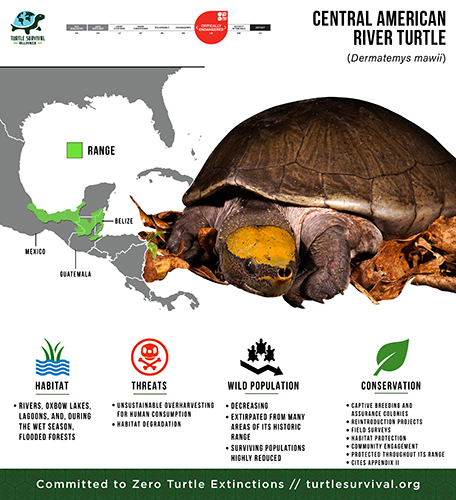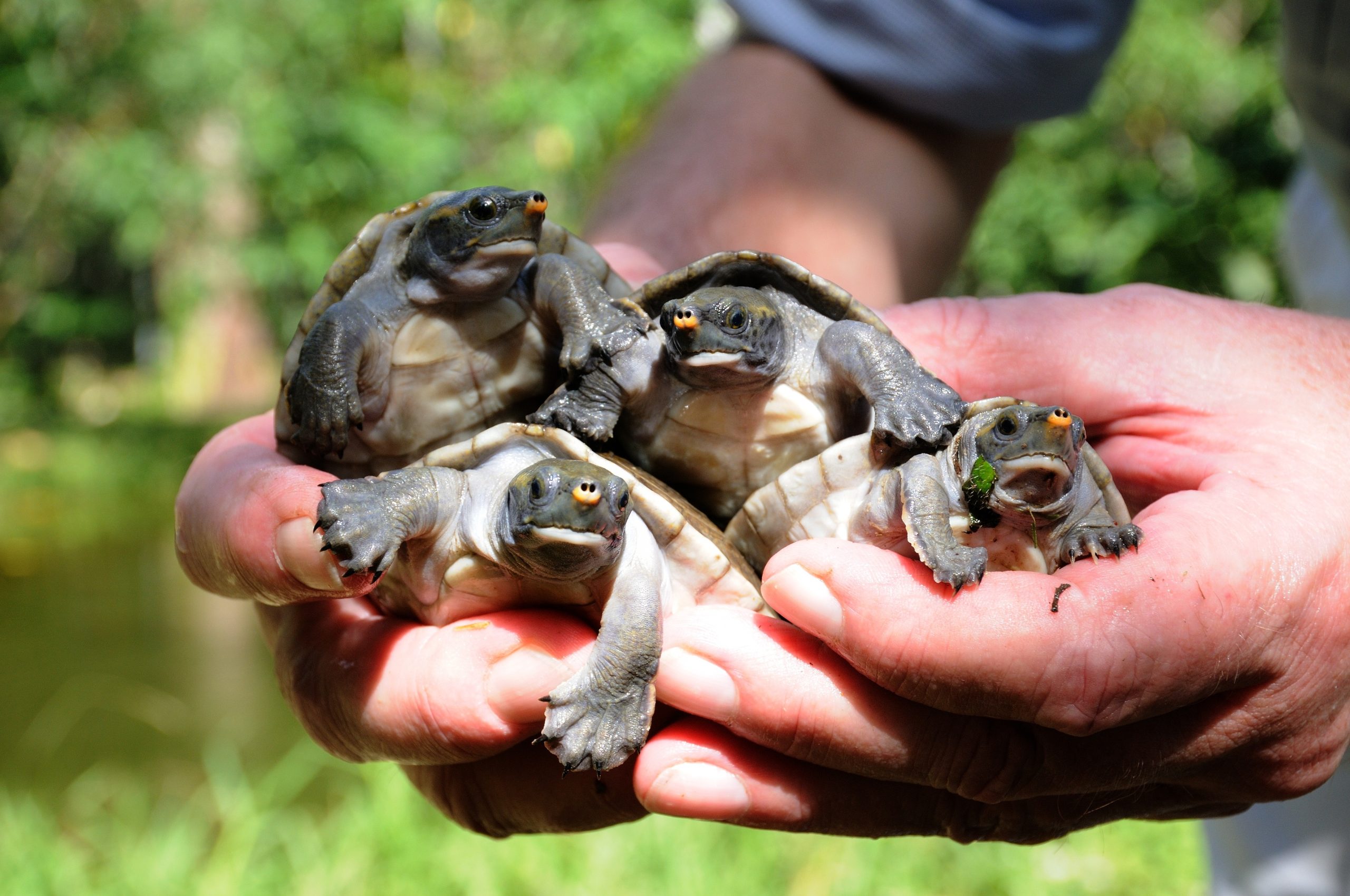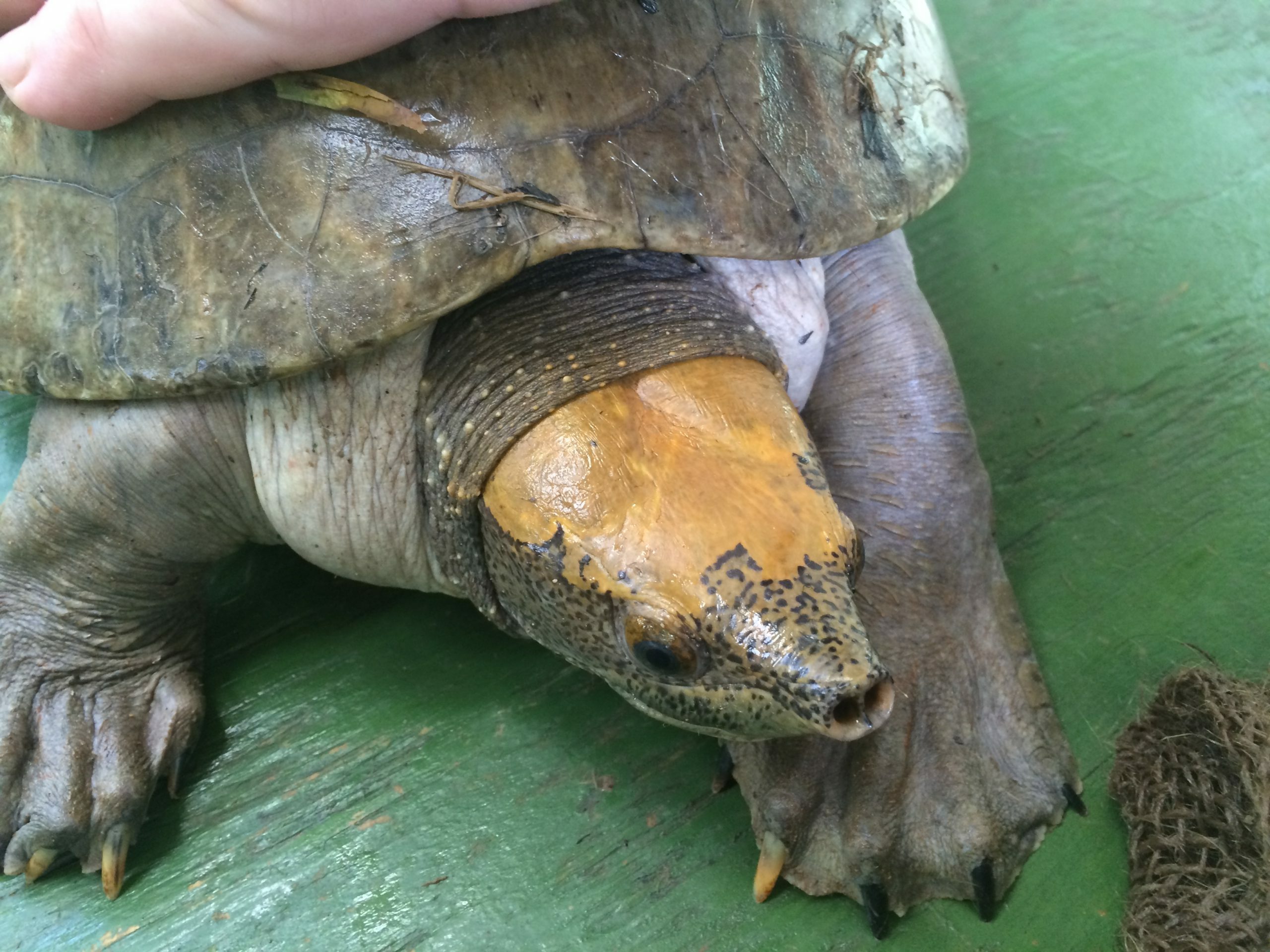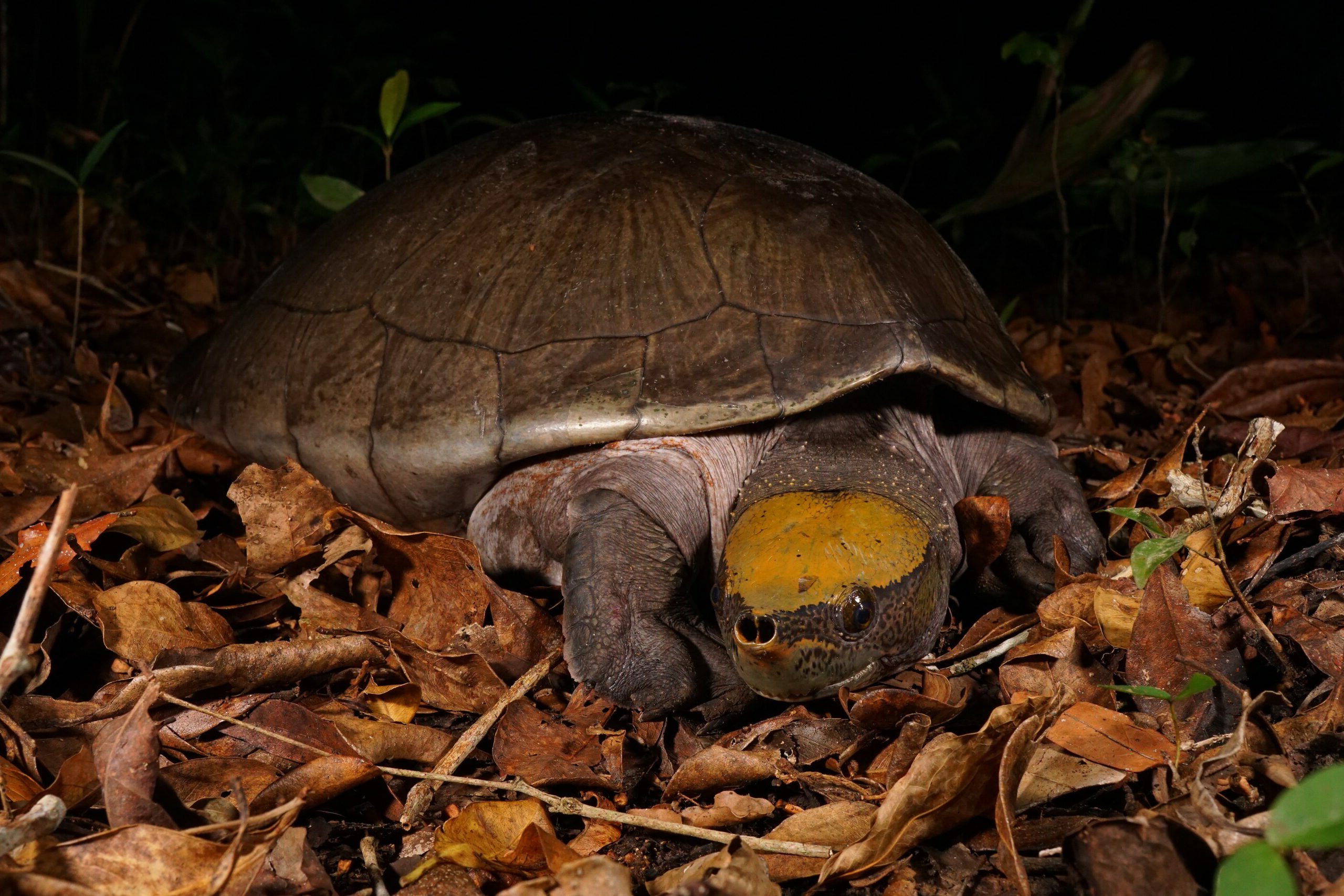The Hicatee is a fully aquatic species that spends nearly 100% of its time in water. It is so adapted for an aqueous life that the Hicatee can barely move on land, let alone even hold its head up. They are primarily active during nocturnal and crepuscular hours, spending the day sleeping in deeper holes on the waterbody bottom. All life stages of this species are herbivorous, feeding on detritus, aquatic vegetation, and overhanging leafy matter and fruits from riparian vegetation. During the wet season, the Hicatee will expand its movements into the flooded forests adjacent to its primary waterbody. During the dry season, they will retreat to the deepest pockets of the water column, sometimes becoming trapped in oxbows or ponds, before they can return to their home river or lake. Because of their inability to make overland treks, they are relegated to stay in these pockets of water until the next wet season.
Join us for Turtle Month!
Why Turtles?
Found around the world in rivers, deserts, jungles, and our own backyards, it’s easy to assume tortoises and freshwater turtles will always be here. But the very traits that once helped them survive render them vulnerable to extinction today.
Our Initiatives
Our Programs
Protecting the world’s most endangered tortoises and freshwater turtles
We All Play a Role.
To save turtles, we all play a role. Every day, tortoises and freshwater turtles around the globe face pressing threats. Your support equips us to support species where and how they need us most.
Turtles are ancient and remarkable creatures who deserve a champion. When you stand with us, you help ensure their continued survival. Together, we can create a world with zero turtle extinctions.



